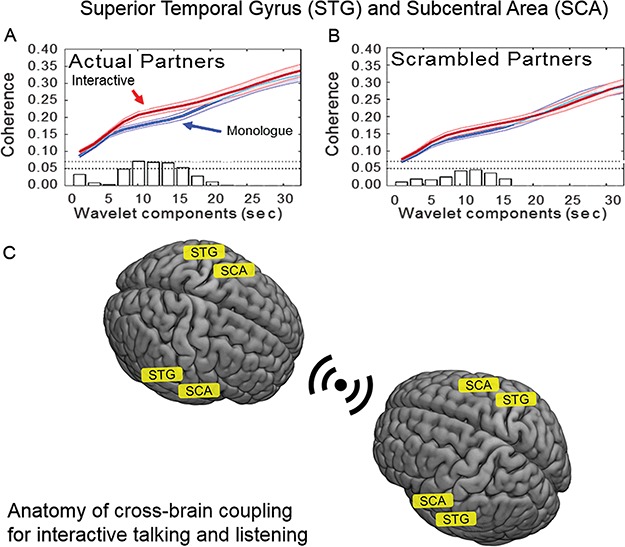Fig. 5.

Cross-brain coherence. Signal coherence between the STG and SCA of participant dyads (y-axis) is plotted against the wavelet components (seconds, x-axis). The functions represent interactive (red) and monologue (blue) conditions (shaded areas: ±1 SEM). Bar graphs along x-axis indicate significance levels for the separations between the two conditions for each of the period values on the x-axis. The upper horizontal dashed line indicates P ≤ 0.01 and the lower line indicates P ≤ 0.05. Panel A shows coherence between actual partners, and panel B shows coherence between scrambled partners. The coherence for periods (wavelet components) between 8 and 14 s is greater for the interactive condition than for monologue in the case of the actual partners (P < 0.01). There is no difference between the coherence functions for interactive and monologue conditions in the case of the scrambled partners. (deOxyHb signals, n = 27 pairs). C. A graphical illustration of the coupled brain areas, STG to SCA, during simultaneous talking and listening epoch pairs.
